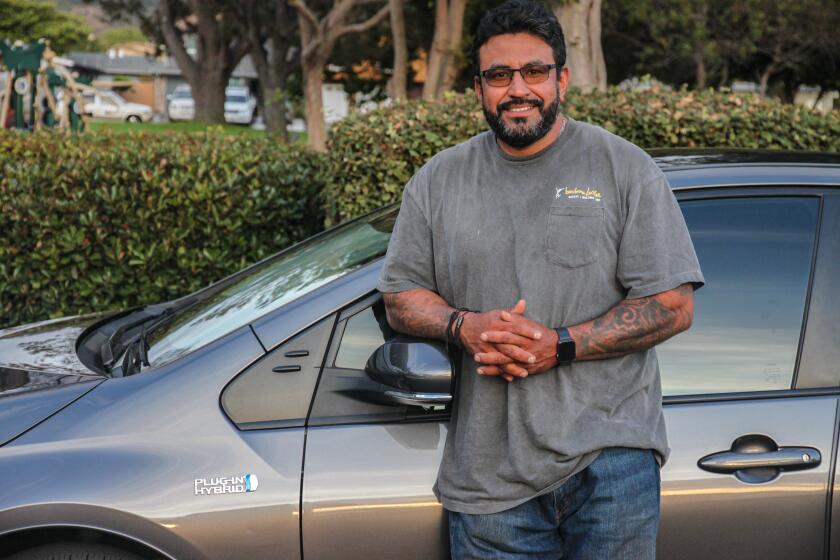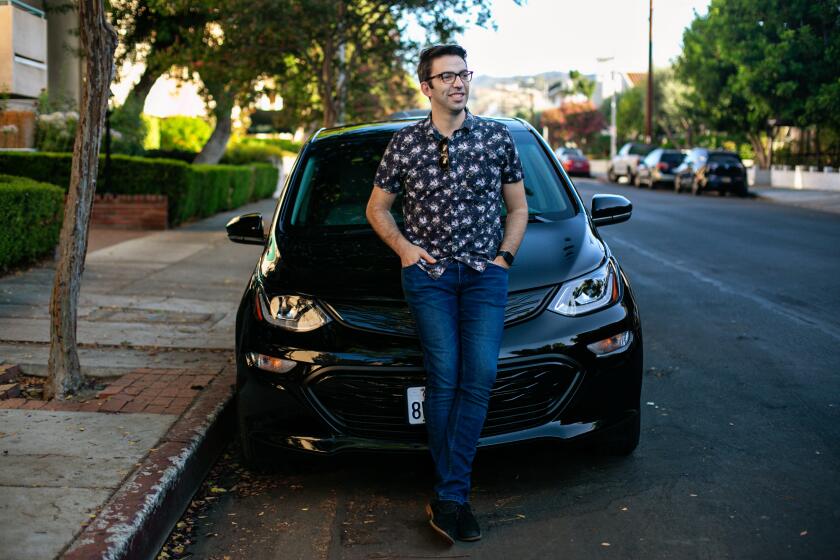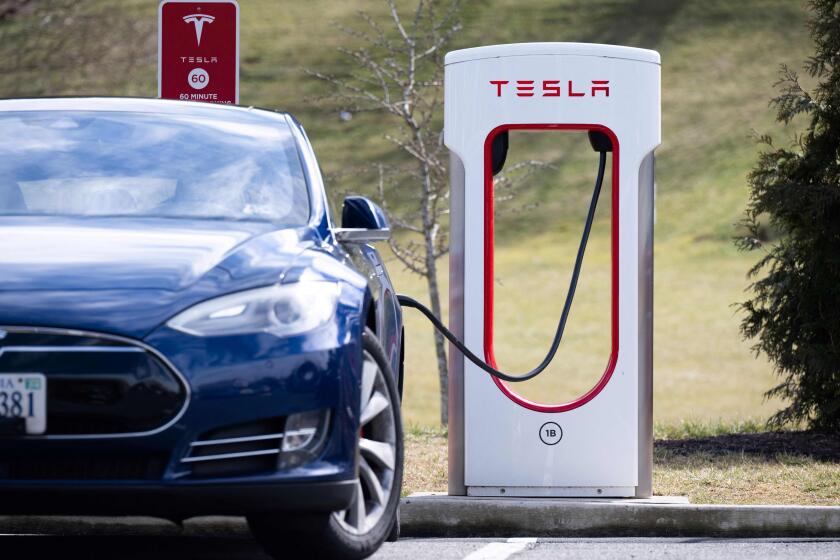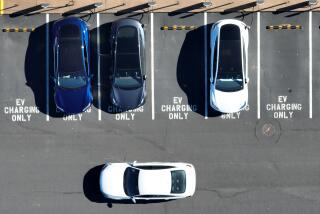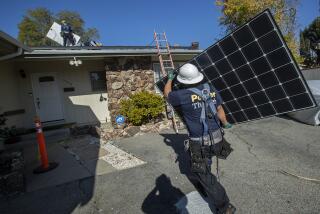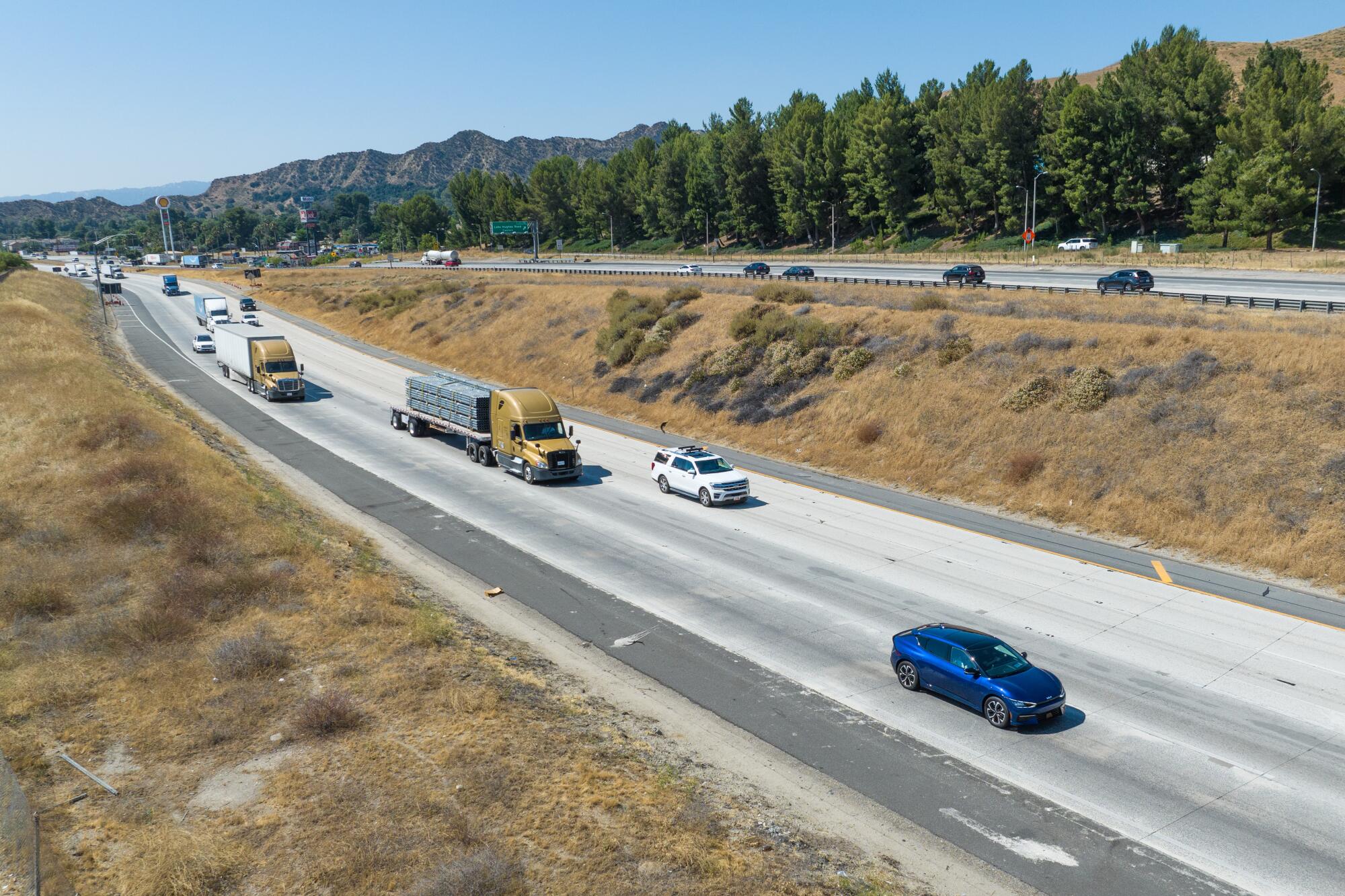
Thinking about treating yourself to an electric car as a winter holiday gift? You might wait until Jan. 1, when new rules kick in that allow your down payment to be paid with free money from Uncle Sam.
If your income isn’t too high, and the car or truck you plan to buy isn’t ultra-luxe, you could qualify for instant cash back of up to $7,500 for a new vehicle, or up to $4,000 for used. The deal applies to electric cars and plug-in hybrids.
Aggressive and impactful reporting on climate change, the environment, health and science.
The money is actually a federal tax credit, but unlike previous programs, you don’t have to wait until tax time to take advantage. Beware though: If you make more income than you claimed when you bought the car — and it’s over the income limit — you’ll have to pay the money back to the IRS.
The new program is making car dealers happy.
Plug-in hybrid cars are an often overlooked alternative to full electric vehicles. But will they help the warming world? It’s controversial.
“There’s going to be more cash on the hood,” said Brian Maas, president of the California New Car Dealers Assn. The new incentive program is far more streamlined than the previous federal program, he said. That should mean more throughput on electric vehicle sales, helping EV customers and dealers. It’ll also help the California government fulfill its mandate that any new passenger vehicle sold by 2035 be electric. “In order to move to 100%, we’ll need literally every consumer who is going to buy a new vehicle to buy zero-emission,” Maas said.
How does it work?
When you buy a new electric car at a registered dealer, you negotiate how much of the tax credit you’ll use for a down payment, and how much cash you’ll get back — usually on the spot, through a credit on your charge card. The dealer must be registered for the program with the IRS. Maas expects most dealers who sell EVs will do so. The dealer takes care of the paperwork and the rebate, and is reimbursed by the government within 72 hours.
Who qualifies?
To get a credit, your modified adjusted gross income cannot exceed:
- $300,000 for joint filers or for a surviving spouse;
- $225,000 for a head of household;
- $150,000 for everyone else.
A reminder, the dealer is not going to check your income. If you fake it or get it wrong, you’ll likely end up with a far bigger tax bill than you anticipated.
Hyundai’s and Kia’s popular new EVs are turning heads and sales were skyrocketing — until the Inflation Reduction Act took their customer rebates away.
Can I get an instant cash rebate on a high-end car?
No. There’s a price limit, based on a vehicle’s sticker total with all options included:
- $80,000 for a sport utility vehicle.
- $80,000 for a pickup truck.
- $80,000 for a van.
- $55,000 for everything else.

Subscribers get exclusive access to this story
We’re offering L.A. Times subscribers special access to our best journalism. Thank you for your support.
Explore more Subscriber Exclusive content.
That’s it?
Well, no. The cars and trucks that qualify for a full refund must be assembled in the United States, with a certain percentage of “critical materials” mined or processed in the United States or from a free trade agreement partner, and a certain percentage of battery components made in North America.
What about cars built overseas?
It’s tricky. After complaints from trade partners in Korea, Japan and Europe, the U.S. Treasury came up with a workaround: The tax credit is available for nonqualified vehicles if a car is leased. It’s the dealer who actually gets the leasing tax break, and it’s up to the dealer how much to apply to a customer’s lease deal. Many dealers are willing to give the full amount to the customer, but not all, so the customer needs to pay close attention to how the deal is structured.
California’s electric car rebate program is designed to steer consumers toward clean, environmentally friendly vehicles. Unfortunately for buyers, it’s confusing, unpredictable and underfunded.
Are used cars covered?
For the first time, yes. The tax credit is available for used EVs purchased from a licensed dealer. The car must cost $25,000 or less. An instant tax credit is available amounting to 30% of the vehicle’s price, with a maximum rebate of $4,000. Different annual income limits apply to used cars:
- $150,000 for joint filers or surviving spouses
- $112,000 for heads of households
- $75,000 for everybody else
The model year must be two years earlier than the year you buy it. As with new cars, plug-in hybrids also qualify for the tax credit.
Sign up for This Evening's Big Stories
Catch up on the day with the 7 biggest L.A. Times stories in your inbox every weekday evening.
You may occasionally receive promotional content from the Los Angeles Times.
Doesn’t California offer EV rebates?
Yes, but things have changed. California is switching up its electric vehicle rebate offerings, which aim to be more efficient and dependable than the smattering of uncoordinated rebate programs that have left both car buyers and car dealers frustrated and, in some cases, angry. After years of criticism that the EV rebates handed out millions of dollars to people who could already easily afford a new car, the rebates are now directed at lower-income buyers.
Under the old regime, which is soon to expire, the state often ran out of rebate money and put buyers on a waiting list until more money came in. Many consumers had problems getting their checks and were forced to spend hours on the phone wrestling with state bureaucracy to receive the money they were promised. That followed the ordeal of trying to get basic information on what programs were offered and figuring out who qualified for what.
“You pretty much needed a PhD to figure it out,” Maas said.
Now that electric cars are mainstream, higher-income Californians will no longer qualify for state subsidies. Lower-income buyers could get up to $12,000.
How does the new state program work?
The state is killing its most problematic program, the Clean Vehicle Rebate Project, which dates back to 2010. Rebates will now be centralized in the Clean Cars 4 All program, focused on getting lower-income car buyers to replace their fossil fuel cars with electric vehicles.
Until now, Clean Cars 4 All has been available only in the state’s five largest clean air districts. Los Angeles-area residents will be most familiar with the South Coast Air Quality Management District. Sometime in the first quarter of 2024, Clean Cars 4 All will be expanded statewide.
Under the revamped program, income-qualified buyers can get up to $12,000 to scrap and replace their internal combustion vehicle with an EV. Without a fossil fuel trade-in, buyers can receive up to $7,500 in “purchase grants,” to be applied to the cost of the new car.
Rebate amounts will be determined by household size. For a single individual, the annual gross income cap is $43,740; for a two-person household, $59,160; three, $74,580; four, $90,000; five, $105,420; six, $120,840; seven, $136,260; and eight, $151,680.
Rebates are available from some utilities and local governments, too, and in some cases you can get money back for a home charger. A search tool for available rebates by ZIP Code can be found here.
Toward a more sustainable California
Get Boiling Point, our newsletter exploring climate change, energy and the environment, and become part of the conversation — and the solution.
You may occasionally receive promotional content from the Los Angeles Times.

